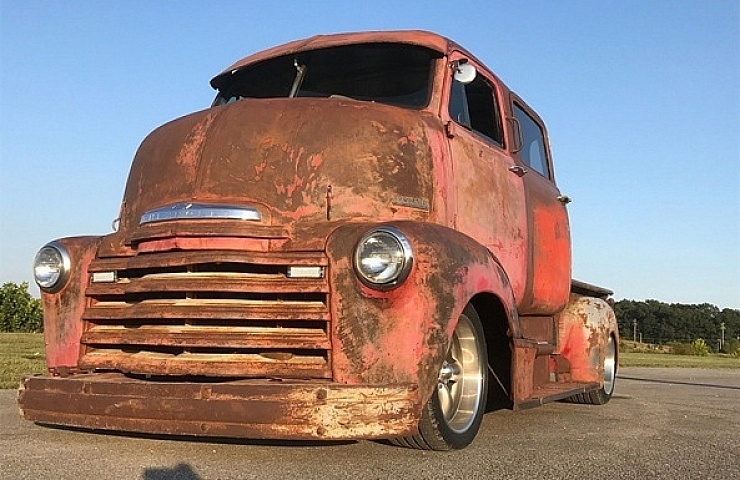If you see an old truck that positions the cab directly over the engine and front axle, then you are probably looking at a Cab Over Engine (or COE) truck. By putting the cab over the engine, the COE’s design maintained the trailer’s cargo capacity while shaving off a few feet from the vehicle’s length. And in the process, it gives the cabover truck an unmistakably strong-yet-stylish appearance.
Whatever Happened to Cabover Trucks?
COE trucks were prevalent in the 1930s but nearly disappeared with the expansion of America’s interstate highway system. Laws limiting a truck’s length to 42 feet were revised in the 1970s. Today, classic COEs, especially restored and revised models with patina surfaces left to show their hard-working heritage are a favorite among classic truck fans. As you can see by the cool cabovers listed on eBay Motors, you’ll find a slow but steady flow of vintage COE trucks for sale.
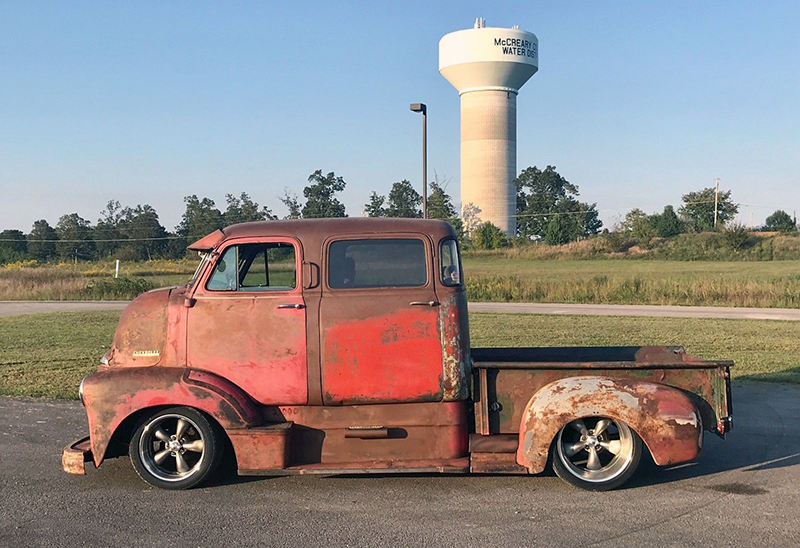
This modified 1951 COE has four doors, providing a generous cabin for passengers.
For example, the powerful dimensions of the 1951 Chevy Crew Cab provide plenty of room for a crew to haul down the highway. The example shown above sits on an S-10 chassis, a common swap. This beautiful rig is further enhanced with a 5.3-liter LS engine. The same seller has a more traditional 1951 Chevy with an interior that was left stock.
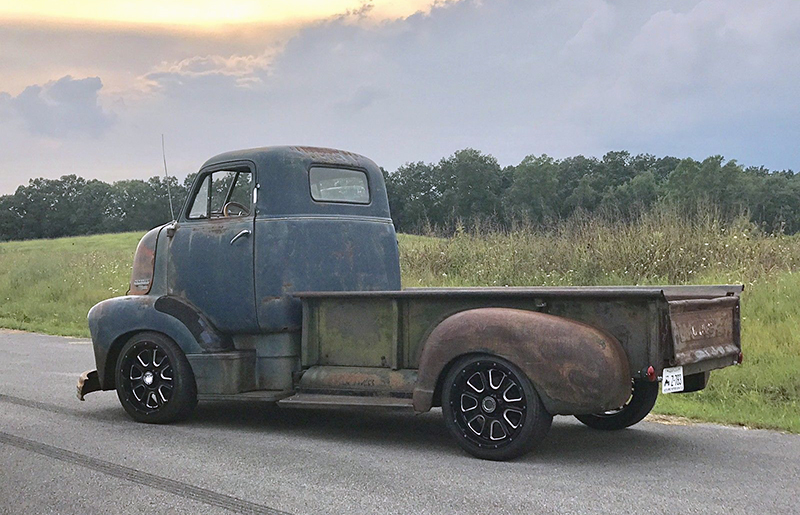
A mostly traditional 1951 Chevrolet COE serves as a shop truck.
Cabover Truck Roots
The COE configuration can be traced back to the White Motor Company in 1932. Shortening the cab portion of the truck not only allowed for a longer trailer. While the lack of a traditional hood meant greater visibility and a tighter turning radius. The drawback was a rougher ride experienced by the driver sitting over a hot and noisy engine. The signature blunt front end also lacks aerodynamics, impacting handling and fuel economy.
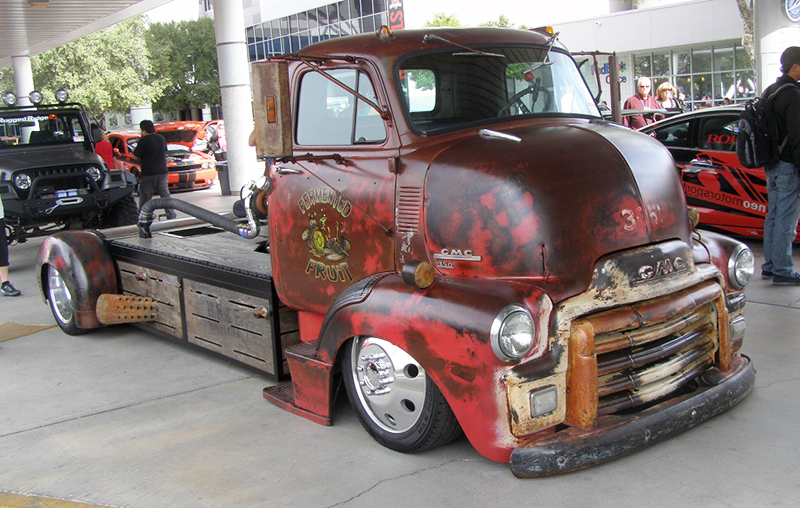
Cab-Over-Engine trucks often sport an aged patina look.
COE Trucks are Rarities on the Road
It’s rare to catch a glimpse of a cabover truck rolling down today’s highways. Their scarcity helps make them more popular at car shows. Moreover, big and bulky COEs offer a lot of options for customization. They can be left as-is or used to haul a trailer. There is even room for a sleeper in most COEs. Or alter the rear bed and add a ramp to create a unique classic-car hauler—like the one we shared with you at the 2015 SEMA Show.
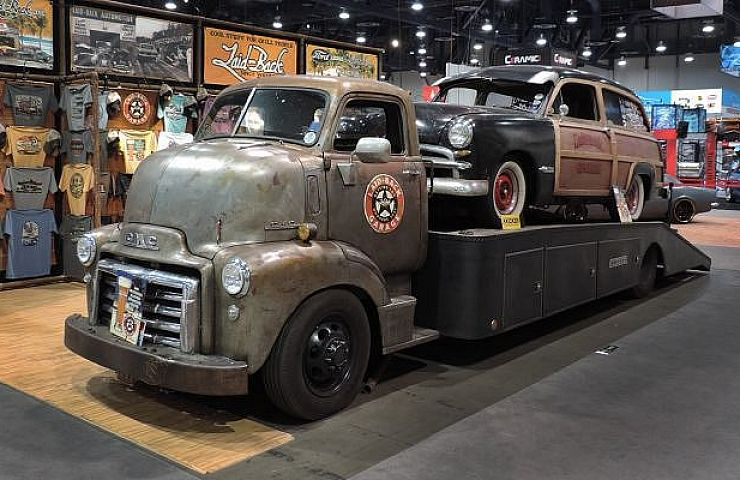
This 1947 GMC Cab Over was turned into a hauler for Laid-Back USA, an apparel company.
Regardless, it appears that we are in the midst of a COE truck revival. Bring it on. No matter how they get modified, fans of classic trucks—and aficionados of great vehicle styling—are making sure that Cab-Over-Engine trucks continue to remind us of an earlier era in transportation.

